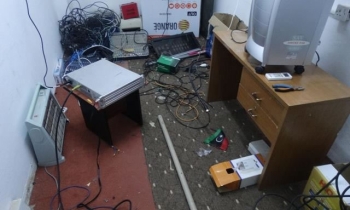New technologies and a booming economy will help double revenues in India's television industry by 2010, but regulatory barriers could impact growth in the world's third-largest cable TV market, Reuters has reported quoting a new study.
The Hong Kong-based Media Partners Asia (MPA) has estimated in a just-released study that India is set to become Asia's leading cable market by 2010, the largest satellite market by 2008, and the most lucrative pay television market by 2015. Turnover for multichannel video, including cable, satellite and Internet protocol television (IPTV), will jump to $7.2 billion from $3.6 billion by the end of the decade, the study showed.

"India remains the most significant and accessible cable and satellite opportunity in the Asia Pacific region, There is a lot of leverage for local and international investors as consolidation takes place and new technologies are deployed in the industry," said Vivek Couto, MPA executive director.
According to MPA, India was Asia’s second largest pay TV market last year with revenue of about $3.6 billion, roughly the same as China. But the country is expected to grow to $10.5 billion by 2015 to join Japan as Asia’s largest. The bulk of revenue in India comes from subscriptions, although advertising sales is growing rapidly.
The size and potential of the industry would also make it an attractive opportunity for large media firms like Malaysia's Astro and Liberty Media, Couto said. But MPA cautioned that the regulations that control cable TV rates, cap foreign direct investment and force content sharing between broadcasters can pull down growth.
"The regulatory framework, especially with respect to retail and wholesale cable TV rates, foreign investment, broadband competition and programme distribution, has become increasingly uneven," Couto said. "Nonetheless, we believe that the market, not regulation, will triumph in the long-term."
In 2005, 53 per cent of Indian households owned televisions, and 57 per cent of these, or 65 million homes, had cable TV. Advertising revenue for cable television was $1.02 billion in 2005, and is forecast to grow to $1.8 billion by 2010. Top broadcasters News Corp's Star, Zee Telefilms and Sony Entertainment Network had a 60 per cent share. But profit margins for cable broadcasters have begun to erode on growing competition, higher costs and regulation, Couto said.
Analog would remain the dominant technology over the coming decade, and cable is expected to remain the core advertising platform for television, but new technologies would generate increasingly higher advertising and subscription revenues.
Annual average cable television revenue per user in 2005 was $3, and will rise to $5 by 2010, MPA estimates showed. But in digital cable and IPTV, average revenues per user will be $7 by 2010. "We expect cable & satellite (C&S) TV economics to deteriorate further but anticipate a significant improvement over the medium and long-term, driven by subscription and advertising," Couto said.

DTH growth will accelerate, driven by Zee's Dish TV and Tata Sky, a joint venture of the Tata group and Star, followed by Reliance Infocomm's Blue Magic and Sun TV. Broadband penetration will also expand on cheaper personal computers and broadband rates and greater consolidation among cable operators, MPA said, estimating that the number of subscribers will grow from 0.9 million to 7.7 million by 2010.
On DTH, Indian cable TV advertising is poised to generate $2.3 billion per annum by 2015, DTH $120 million (about 9 per cent of total DTH industry revenue by 2015) and IPTV $21 million. Driven by DTH pay TV competition and potential deregulation, MPA expects cable to gradually consolidate last mile ownership, ramp-up deployment of bundled digital video and broadband Internet, and corporatise industry practices.
India remains the most significant and accessible C&S opportunity in the Asia Pacific region. However, the regulatory framework, especially with respect to retail and wholesale cable TV rates, foreign investment, broadband competition, and programme distribution has become increasingly uneven.
India’s C&S industry turnover grew 18.5 per cent in 2005 to reach $3.6 billion. Out of this, $2.54 billion came from subscription and $1.02 billion from advertising. The survey indicate a total of 855,000 broadband subscribers as of year ending December 2005, representing 0.4 per cent household penetration. ADSL had a 73 per cent share of the market with cable at 27 per cent.









